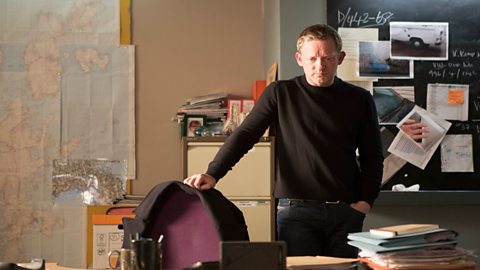Narrative codes and conventions
Flashbacks
These are used to give the audience extra information, usually about the past of a character, which helps drive the story. Flashbacks also manipulate time and space - Sherlock is a good example of this: often the same event or crime is shown more than once, but with additional clues highlighted, or from a different, more revealing perspective.
Point of view shots
These give the audience the same view of the action as a particular character. A great example is when the audience see the point of view of the shark in the Jaws movies. These are particularly effective in horror films or thrillers where the camera takes on the point of view of the villian stalking a victim.
Apparently impossible positions
These are camera shots designed to give unusual perspectives of the action, such as an aerial shot. You can see this in the opening scene of Skyfall where a droneA small, remote-controlled aircraft which can be used for filming aerial shots. was used to film some of the motorbike chase.

Aerial shots can give the audience an perspective that they wouldn't normally be able to see
Privileged spectator positions
This is when the camera places the audience in a position where the viewer sees aspects of the narrative that other characters cannot see. This is used in murder mystery or detective dramas where the audience often know more than some of the characters making it clear to them who the culprit is.
Voiceovers
Voiceovers can be used to describe and direct the narrative in programmes like Come Dine With Me, but they can also be used to inform the audience of missing information that is not shown on screen.
For example, in Love Island the voiceover recaps what has happened in the last twenty four hours in the house, without the need to show all of the footage on screen, giving the continuing narrative context.
In film trailers, voiceovers are used to convey the narrative of the film, without giving too much away and keeping the audience curious enough to watch the film.
Engima codes
This is an editing technique in which the camera shows only some of the narrative, leaving the audience with a sense of mystery as to where the narrative will go next.
Murder mystery and detective dramas use enigma codes to slowly reveal the narrative, with key information needed to solve the case saved until near the end of the programme to create a thrilling conclusion.

The crime drama 'Shetland' uses enigma codes to slowly reveal the narrative as D.I. Perez unravels the case
Action codes
These are actions in the narrative that tip off the viewer about what to expect as the narrative progresses. It relies on the idea of cause and effect.
For example, in an episode of Casualty, actions early in the episode often give clues to what might happen later on. For instance, a character forgetting to switch the iron off might lead to an accident which results in them attending the casualty department.